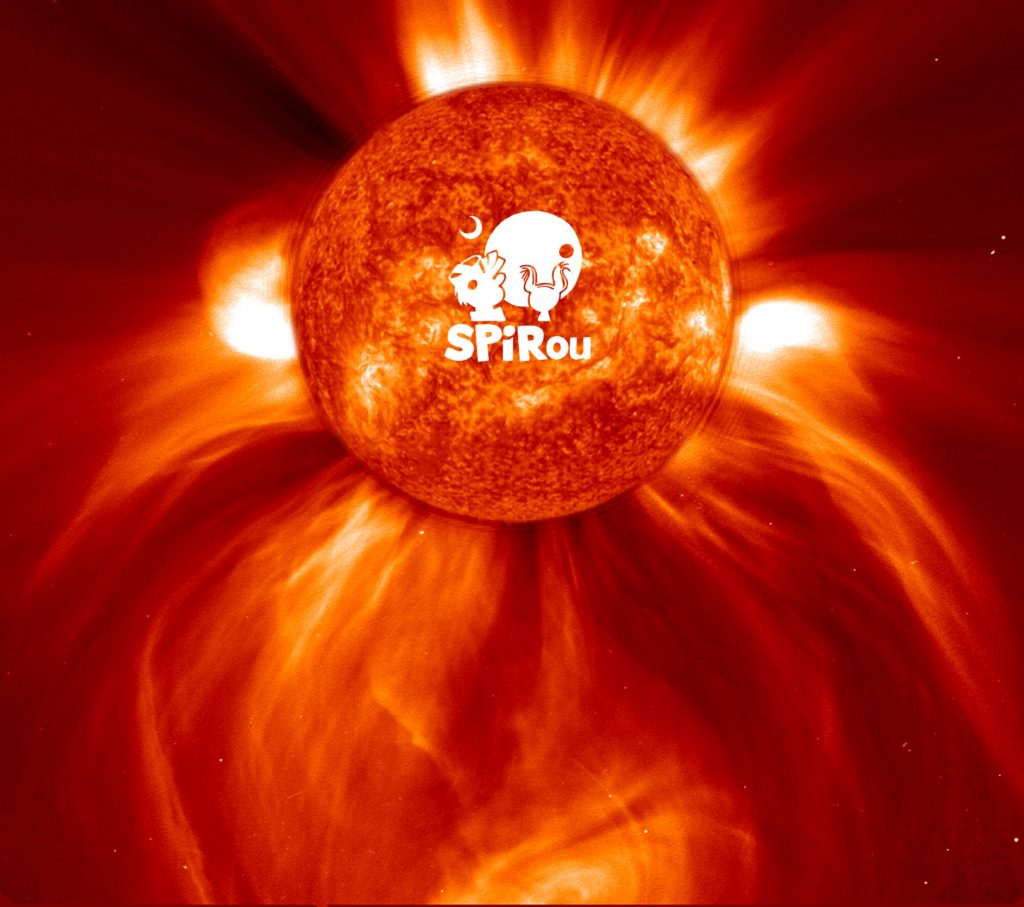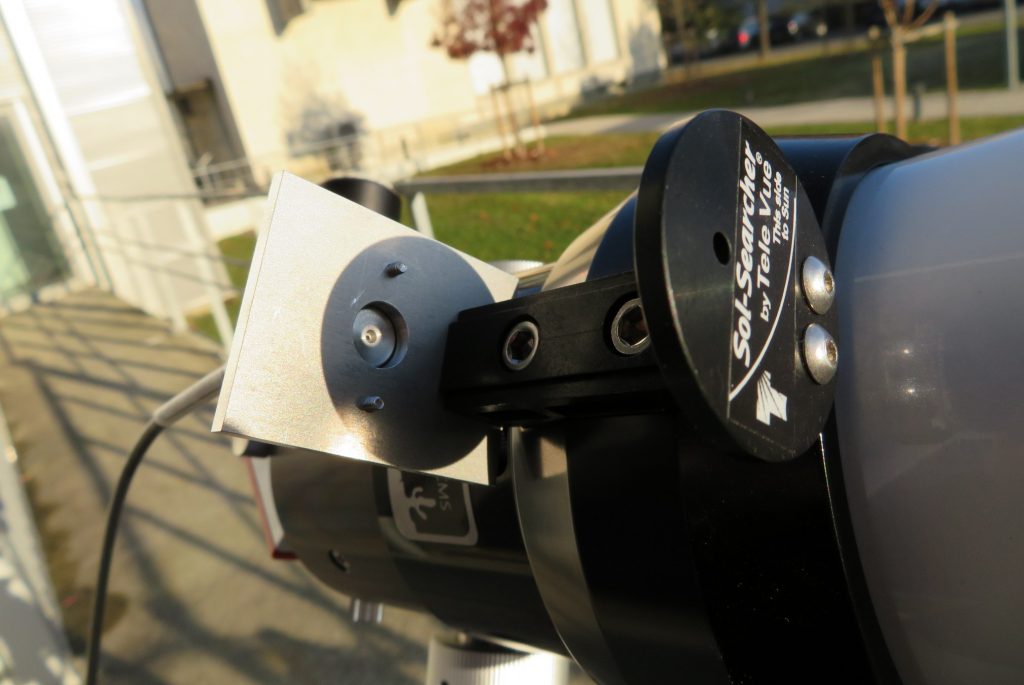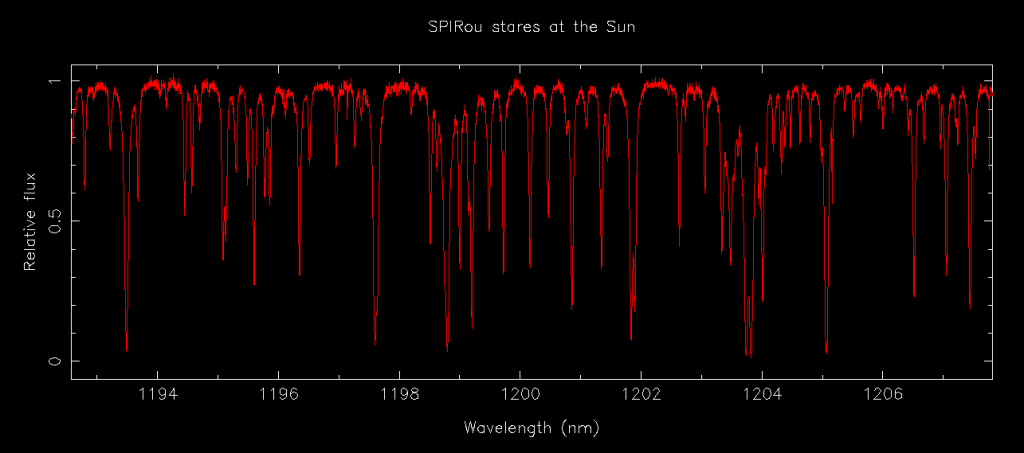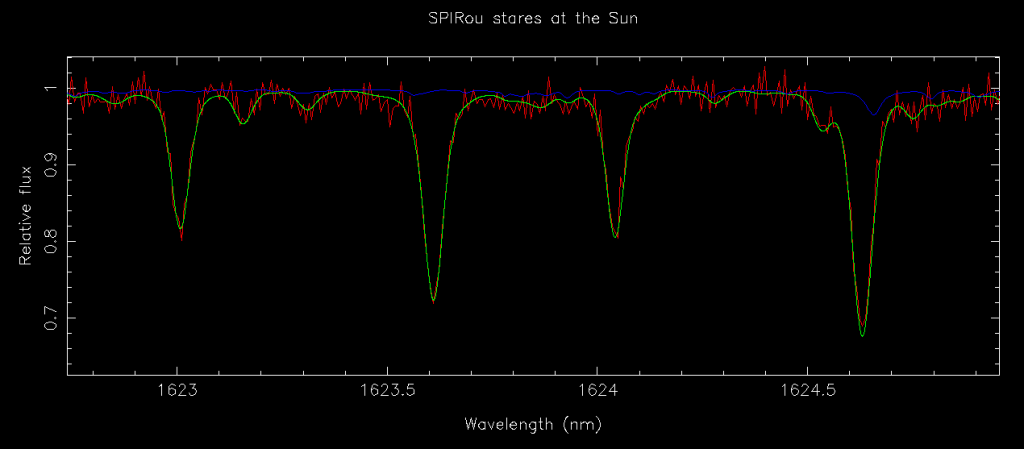2017 November: Staring at the Sun with SPIRou
SPIRou collects its first solar photons!
SPIRou collected its first non-laboratory photons on Nov 15 & 16 by staring at the Sun for a couple of hours.

For these observations we used a solar telescope with a motorized mount, allowing to track the Sun along its celestial course. A 300 µm fiber was attached to the side of the telescope, collecting light from the Sun through a small aperture and conveying it inside the IRAP / OMP clean room where SPIRou is operating. Solar light was then injected into the instrument through the SPIRou injection bench – ordinarily used as an artificial star to feed SPIRou with a stellar-like beam. The infrared solar light was then analyzed for its polarimetric content before being dispersed by the cryogenic spectrograph and recorded on the detector.
This experiment is part of the ongoing SPIRou acceptance tests, designed to demonstrate that SPIRou exhibits nominal performances, both as a velocimeter that can characterize planetary systems of nearby M dwarfs, and as a spectropolarimeter able to investigate the impact of magnetic fields on star / planet formation. This specific experiment allowed us to demonstrate that SPIRou reaches a spectral resolving power of 70000, and can measure polarimetric signatures down to sensitivities of 10ppm.
Special thanks to the student association UPS-IN-SPACE (https://fr-fr.facebook.com/upsinspace31/) based at Université de Toulouse Paul Sabatier for lending us their equipment (solar telescope and motorized mount) and more particularly to Sacha Foschino and Hadrien Dupuis, for their assistance along the observations… at 1°C outside temperature!






